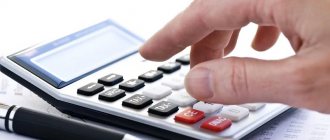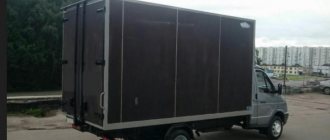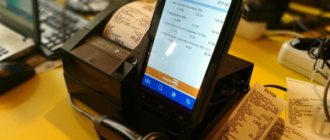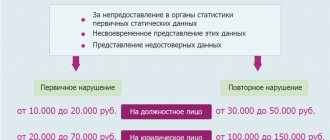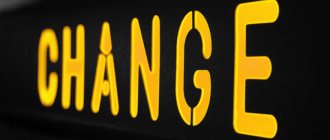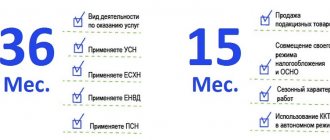Are you planning to open a catering establishment? The form of ownership (individual entrepreneur or LLC) and taxation system for a restaurant, bar, cafe or pizzeria affects what restrictions you will face when starting an activity, what kind of accounting you will have to keep and how much you will pay to the treasury. Read this article so you don’t make a mistake in your choice!
- USN “Income minus expenses”
- Basic tax system
Which taxation to choose for a cafe: simplified tax system or UTII
The most popular taxation systems in public catering are the simplified tax system and UTII. Their essence is that these are special modes for small and medium-sized businesses that can be used by both individual entrepreneurs and LLCs.
The advantages of these modes are simplification of accounting, as well as a reduction in the number of taxes paid. Payments under special regimes will not apply:
- income tax for LLC;
- Personal income tax (for yourself), for individual entrepreneurs;
- tax on property of organizations or individuals used for business activities (provided that the property is not on the list according to which property tax is calculated from the cadastral value);
- VAT.
But it must be remembered that, unlike OSNO, under special regimes, the owner will have to make mandatory payments to the budget, even if the cafe has no profit or operates at a loss, which, for example, may occur in some seasons of the year. In addition, reducing the number of taxes does not eliminate them completely, and therefore the enterprise on the simplified tax system and UTII, in addition to fixed rates, also pays:
- Personal income tax for employees;
- insurance premiums that were previously paid to the Pension Fund, Social Insurance Fund and Federal Compulsory Medical Insurance Fund (collection of all contributions is carried out by the Federal Tax Service);
- transport tax;
- land tax;
- property tax, if in the region where the cafe is located there is a law on the use of cadastral value as the basis for taxation
Now let's look at each of the modes in more detail.
buh1
Choose a form of ownership: individual entrepreneur or LLC
If you are planning to open a small establishment, it is better to register an individual entrepreneur - in this case you will not have to maintain accounting records, which simplifies life and reduces costs. Please note that an individual entrepreneur can only sell low-alcohol drinks: beer, cider, etc., so a bar will have to register a legal entity. A compromise option is to register the establishment as an individual entrepreneur, and open an LLC with a single founder to sell strong alcohol.
We described in detail the pros and cons of individual entrepreneurs and LLCs in the article “Individual entrepreneur or LLC: which form of ownership is best to choose for retail trade” - read it, it is also relevant for you. Regarding the choice of OKVED codes, there is also a cheat sheet for beginners.
Don't have time to understand the nuances? Trust us! We’ll tell you which form of ownership to prefer, we’ll help you choose a tax system for a cafe or restaurant, and we’ll register your individual entrepreneur or LLC.
Schedule a consultation!
A single tax on imputed income
EDNV is a fee in the form of a single tax with a maximum rate of 15%, but the duty is withheld not from the amount of actual, but from imputed (estimated) income, the amount of which is determined on the basis of the basic profitability specified in the Tax Code of the Russian Federation and multiplied by the physical value. In addition, during the calculation it is necessary to make adjustments for correction factors K1 and K2.
It is important to know: individual entrepreneurs have the right to reduce taxes through insurance premiums not only for employees, but also for themselves, although by no more than 50%.
Previously, this opportunity was provided only through employee contributions. Table of the main parameters of EDNV for a cafe that must be taken into account when choosing this system:
| Sign | Feature |
| Who has the right to use | IP, LLC |
| Employee restrictions | 100 people |
| Restrictions on the area of the visitor service hall | 150 m2 |
| Validity | Extended until January 1, 2021 |
| Share of participation of legal entities | No more than 25% |
| Region restriction | Decisions in a particular region are made by local authorities |
| Annual revenue limit | Unlimited |
| Limit on residual value of fixed assets | Absent |
| Tax rate | 15% (in some regions it can be reduced to 7.5%) |
| Coefficient K1 | 1,798 |
| K2 coefficient | Installed by local authorities |
| Basic profitability for catering establishments with customer service areas | 1000 rubles per square meter |
| Basic profitability for catering establishments that do not have customer service areas | 4,500 rubles per employee, including entrepreneur |
| Taxable period | Quarter |
| Providing a declaration | Based on the results of the quarter |
So, taking these features into account, let’s look at an example calculation:
A unified taxation system for cafes on imputed income is provided for in the region by local authorities.
The coefficient K2 is 0.7. Initial data LLC "Fishing Hut"
| Article | Physical indicator |
| Area of the hall for serving visitors | 55 m2 |
| Number of employees hired | 4 people |
| Total income for the year | 36,580,000 rubles |
| Total expenses for the year | 16,400,000 rubles |
| Insurance premiums per year | 828,000 rubles |
| Residual value of fixed assets | 240,000 rubles |
Thus, the calculation of EDNV for three months is carried out using the following formula: 1000 * (55 + 55 + 55) * 0.7 * 1.798 * 15% = 31,150.35 rubles. Other indicators are not needed for calculation; only the size of the hall is taken into account.
If the Fisherman's Hut cafe did not have premises, then the calculation would be carried out using the following formula: 4,500 * (4 + 4 + 4) * 0.7 * 1.798 * 15% = 10,194.66 rubles. Moreover, if the owner registered as an individual entrepreneur, then when calculating the tax it would be necessary to calculate himself using the following formula: 4,500 * (5 + 5 + 5) * 0.7 * 1,798 * 15% = 12,743.32 rubles .
Which tax system to choose in 2021 for individual entrepreneurs using UTII in the catering industry?
Rubric “Business Issues from Practice”. As you already know, we provide free consultations for SMEs (by the way, you can sign up by calling 44-77-72 or 32-15-01). Therefore, we decided to publish questions and answers from our experience. You can find the full list under the hashtag #from_consultation_practice
In this article we will answer a question that we often hear when working with clients - “Which taxation system to choose in 2021 for an individual entrepreneur using UTII in the catering industry?”
Starting from 2021, UTII will no longer be used, and this will create big problems for small businesses.
And although the government continues to receive proposals to extend the validity of UTII for individual entrepreneurs, at the moment UTII will not be applied from 01/01/2021.
Some UTII taxpayers have already lost the right to use this system due to the introduction of mandatory labeling. Sellers of medicines and shoes will not be able to use UTII from July 1. The introduction of mandatory labeling of these goods was postponed to this date. And in the current economic situation, they may postpone it again. Will wait!
It makes sense for current payers of this tax to decide in advance which tax system they will apply from 2021.
The Tax Service has launched additional services so that they can make the right choice:
— “Tax calculator - Selecting a tax regime” https://lkip2.nalog.ru/calculator; — “Which mode is right for my business?” https://www.nalog.ru/rn50/service/mp/.
If the taxpayer does not write a notification/application for the transition to one of the special regimes before December 30, 2020, he will automatically end up on OSNO (VAT). Main taxation systems:
| OSNO (VAT) | IP |
| OSNO (excluding VAT) | IP |
| simplified tax system 6% (income) | IP |
| STS 15% (income minus expenses) | IP |
| NDP (self-employed) | IP |
| PSN (patent) | IP |
| Unified agricultural tax (agricultural tax) | IP |
| UTII (imputation) | canceled |
The simplest taxation system is PSN (patent ).
:
The main advantages of PSN:
- It is not necessary to keep accounting records, only tax accounting of income is kept in the income book of an individual entrepreneur applying the patent taxation system. The book is kept separately for each patent received, where it will be necessary to record all revenue received;
- there is no need to submit reports - no declaration of tax paid in connection with the use of the patent tax system is submitted to the tax authorities;
- it is possible to use PSN in conjunction with other taxation systems (STS, UTII, OSNO);
- the calculation of the amount of tax to be paid is carried out by the tax authority directly in the patent and, accordingly, is clear to the taxpayer
But, as with any other system, there are also disadvantages:
- there are restrictions:
* the total income of an entrepreneur for all types of activities is limited to 60 million rubles. in year;
* the area of the hall should be no more than 50 sq.m.;
* the number of employees is limited - no more than 15 people.
- When applying the patent taxation system, an individual entrepreneur cannot deduct from the cost of the patent the amount of insurance premiums that he paid for himself and his employees to the Pension Fund of the Russian Federation and the Social Insurance Fund, as provided for UTII and the simplified tax system.
The tax period of a patent for an individual entrepreneur is one calendar year. If a patent is issued for a period of less than a calendar year, the tax period is the period for which the patent was issued. In the event of termination of business activity in respect of which the patent tax system was applied, before the expiration of the patent, the tax period is recognized as the period from the beginning of the patent until the date of termination of such activity.
A patent is issued from any date, for a period from 1 to 12 months inclusive within a calendar year. This means that a patent for a year can only be obtained from the beginning of the year.
The second most common taxation system in the public catering industry is the simplified tax system of 15% (“income minus expenses”) .
The advantages of such a system:
- accounting is simplified - only transactions that affect the formation of the tax base are recorded in the book of income and expenses;
- The number of reports submitted to the Federal Tax Service is decreasing - the declaration is submitted once a year.
Disadvantages of simplified tax system 15%:
- there are restrictions:
* the total income of an entrepreneur for all types of activities is limited to 150 million rubles. in year.;
* the area of the hall should be no more than 150 sq.m.;
* the share of participation of other organizations is no more than 25%;
* the number of employees is limited - no more than 100 people.
- the mandatory minimum tax is established for the simplified tax system (1% of income), it will have to be paid in any case, even if expenses exceed income;
- it is necessary to correlate your expenses with the list of expenses specified in Article 346.16 of the Tax Code of the Russian Federation - if the company incurs expenses that are not listed in the list, then such expenses cannot be taken into account;
To apply the simplified tax system, you need to write an application to the Federal Tax Service. You can switch from 01/01/2021 at the time of registration of an individual entrepreneur, within 30 days from the date of registration of an individual entrepreneur.
At the moment, the conditions for the application of taxation systems this year are changing greatly in the direction of improving the conditions of application. All innovations will have to come into force from 01/01/2021.
We recommend returning to the choice of taxation system for 2021 in October-November 2021 - then the state will fully adopt all relevant laws and regulations.
Simplified taxation system
The simplified tax system is also a tax collection at a single rate instead of paying several taxes. But, unlike EDNV, the simplified tax system provides the payer with two types of fees to choose from:
- 6% on income;
- 5 – 15% on income minus expenses (the rate is determined by the decision of regional authorities).
In the first option, it is necessary to pay 6% of the total income of the cafe, regardless of the amount of expenses. In the second case, a tax of 5 to 15% is paid from the difference that was formed when income was reduced by expense.
There is also a minimum tax rate of 1% of total income for the period without deducting expenses. For example, with an income of 5,000,000 rubles, the minimum rate will be 50,000 rubles, which must be paid even if the cafe’s activities become unprofitable.
In addition, expenses that result in a decrease in income must be documented. At the same time, in contrast to the general tax regime, the list of expenses that can be taken into account under the simplified tax system is less extensive.
Also, accounting for expenses requires more complex accounting operations, and it is also necessary to take into account the current positions of the tax authorities, the Ministry of Finance and judicial practice. Otherwise, the Federal Tax Service may consider the tax base to be underestimated and assess additional tax with penalties and interest.
It is important to know that Bill No. 939-7 was introduced into the State Duma, which provides for a reduction in rates under the simplified tax system to 1-3% under the “income” system, and 3-8% under the “income minus expenses” system.
Table of the main parameters of the simplified tax system for cafes that must be taken into account when choosing this system:
| Sign | Feature |
| Who has the right to use | IP, LLC |
| Employee restrictions | 100 people |
| Restrictions on the area of the visitor service hall | Absent |
| Validity | Not limited |
| Share of participation of legal entities | No more than 25% |
| Region restriction | Local authorities decide on the rate under the simplified tax system “income minus expenses” within 5-15% |
| Annual revenue limit | 120 million rubles. and no more than 90 million rubles. 9 months in advance to switch to the simplified tax system from other modes |
| Limit on residual value of fixed assets | No more than 150 million rubles. |
| Deflator coefficient | Canceled until January 1, 2021 |
| Basic profitability for catering establishments with customer service areas | Absent |
| Basic profitability for catering establishments that do not have customer service areas | Absent |
| Taxable period | Calendar year |
| Providing a declaration | At the end of the year |
So, taking into account these features, let’s consider an example of calculation of Fisherman’s Hut LLC with the same initial data:
| Type of simplified tax system | Tax rate | Calculation | Amount for the year |
| Income | 6% | 36 580 000 * 6% – 414 000 | 1 780 800 |
| Income Expenses | 15% | 36 580 000 – 16 400 000 *15% | 3 027 000 |
As can be seen from the calculation, the “income minus expenses” system is not profitable when operating a cafe. The rational use of this program is only if business expenses are at least 60% of income.
Tax accounting for restaurants and cafes (in public catering)
Don't know what taxation to choose for a cafe or restaurant?
It depends on the category of the establishment. For example, for a coffee shop, pizzeria or cafe without selling excisable goods, special regimes are best suited - a simplified system (STS) or a patent. The patent cannot be applied in all subjects of the Russian Federation; moreover, it is available only if the area of the service hall does not exceed 50 m² ( ). Of the two types of simplified tax system - “Income minus expenses” and “Income” - the second is preferable for small businesses.
If the establishment plans to provide a full range of services, it is better to choose a general taxation regime.
Are you unsure about your choice? Take advantage
Choosing a tax regime for individual entrepreneurs
When choosing UTII or a patent, you only need to keep tax records: fill out the “Book of Income and Expenses of an Entrepreneur,” which records the amounts of income. The tax authorities are not interested in expenses under these regimes.
Income is taken into account on a cash basis: everything that comes to the current account is considered income, with the exception of some cases - for example, when returning from an accountable person or from a supplier, when the customer pays a certain amount, and then the supplier returns the money because he could not complete the delivery.
As a result, tax accounting for a restaurant or cafe comes down to only keeping records of income, which is quite simple to do. To do this, you do not need specialized software; it is enough to calculate the amounts from bank statements and cash registers.
Choosing a tax regime for an LLC
As for the LLC, here, along with the tax office, it is required to maintain full-fledged accounting records. The main difficulty is the formation of accounting registers, or, as they are also called, “postings”. They need to be done for every business transaction:
- purchasing goods from a supplier;
- sale of goods;
- payment of salaries;
- payment of taxes;
- calculation and calculation of taxes, etc.
For any fact of economic activity, registers must be formed and reflected in the relevant reports. Also, a balance sheet and an income statement are submitted, which reflect the main business indicators as of December 31:
- availability of assets: equipment for production and trade, furniture, etc.;
- how much money is left, how much buyers owe you;
- information about liabilities: debts and sources of income.
Accounts receivable may arise. Let's say a restaurateur has received something from a supplier, but has not yet paid him - the debt to the supplier in this case is reflected in the liability side of the balance sheet, and the goods received are reflected in the asset. Or the founders initially contributed some amount for the purchase of equipment - in this case, the money is reflected in the asset side of the balance sheet under the item “Cash” and at the same time an entry is made in the liability side of the balance sheet under the item “Retained earnings.” Unfortunately for entrepreneurs, such reporting is of no value to them, but it is mandatory to maintain it.
Next, we will tell you which taxation system is better for a restaurant, how you can save on accountant services and organize accounting.
Patent system as an alternative
PSN is a less popular, but also suitable for a cafe, tax system under a special regime. Its essence lies in the fact that an entrepreneur receives a patent for a tax rate of 6% of income, which exempts him from paying taxes such as VAT, personal income tax for himself and property tax associated with activities.
In addition, PSN exempts you from using cash register machines, and also provides the opportunity to purchase a patent for a period of 1 to 12 months. This is very convenient, for example, when a café is open seasonally.
It is important to know: the State Duma is considering a bill that would abolish the exemption from cash register for PSN from 2018.
A significant drawback of this system is that not in all regions of the country the local legislative assembly approved the use of PSN. Also, only individual entrepreneurs can acquire patents, which is not always beneficial for working in the catering industry, since, for example, only legal entities can obtain permission to sell alcoholic beverages. The only exception for individual entrepreneurs was beer-based drinks.
It is also worth noting that the rate is calculated on potential annual income, which is determined by a separate regional law, but in the range from 100,000 to 1 million rubles, taking into account the conversion to the deflator coefficient, which is 1.425.
Accordingly, the maximum amount of potential income can be equal to 1,425,000 rubles. Table of main parameters for PSN
| Sign | Feature |
| Who has the right to use | IP |
| Employee restrictions | 15 people |
| Region restriction | Not available in all regions |
| Annual revenue limit | 60 million rubles. |
| Payment for a patent up to 6 months | In full within 25 days |
| Payment for a patent 6-12 months | 1/3 of the amount within 25 days and 2/3 30 days before expiration |
Calculation of the annual tax of the Fisherman's Hut cafe, provided that registration was carried out as an individual entrepreneur:
The potential annual income for a cafe in Moscow is 360,000 rubles. Thus, the calculation is carried out according to the following formula: 360,000 * 6% = 21,600 rubles.
Taxation of cafes and restaurants
Most restaurateurs choose the simplified taxation system “Income minus expenses” or the basic taxation system. It often happens that the business is so large that there is really no choice, because the threshold value for annual revenue is 150 million rubles and, if the establishment brings more, it will no longer be possible to choose the simplified system, you have to switch to the main one.
USN “Income minus expenses”
This regime is chosen to reduce the tax burden. When the share of income, namely net profit from total revenue, is up to 30%, this is really profitable. Why pay 6% of revenue when you can pay 15% of net profit and save?
But there is also a downside to this form of taxation: the additional burden of accounting. Payments are made using both the cash and accrual method. That is, you will have to count not only income.
To accept the cost of purchased goods as expenses in tax accounting under the simplified tax system “Income minus expenses”, three conditions must be met:
- The goods have been received (ownership rights have been transferred with supporting documents: invoice or deed).
- The goods have been paid to the supplier.
- The goods are shipped to the buyer (usually issued by an invoice or an acceptance certificate).
All three conditions must be met in order to include the cost of purchased goods as expenses.
For example, a cafe bought bottled beer from a supplier → sold it to a guest in the establishment → received money.
If you follow the logic, here they are - expenses and income, since the establishment did not produce anything, but only resold the goods.
But buying beer will only be an expense if the cafe has already paid the supplier for the supply. Often, suppliers have conditions with a deferred payment for a month or even three - in this case, there was no settlement with the supplier, and therefore no expense.
In this case, the establishment only has income. At the time of payment, the supplier needs to make an entry in the book of expenses and income that payment for this particular product has been made. It is quite difficult to keep this in mind all the time, so this type of accounting requires additional equipment, at least an accounting system.
It is also worth considering the fact that the goods were received according to the invoice. Because another unpleasant situation may arise for the restaurateur. For example, you are making payments to suppliers, but have not yet received the goods, and you are selling goods from old stock to guests. In this case, payment and receipt of goods cannot be considered an expense until it is sold. This applies not only to goods, but also to ingredients for semi-finished products: only at the time of shipment (sale) of finished products to a guest can you record this as an expense.
When choosing the simplified tax system “Income minus expenses”, it is important to hire a qualified accountant who works with software that allows you to track all changes in items, identify their costs and check compliance with the conditions.
In Finguru there are specialists with experience in tax accounting in public catering who will relieve you of the need to constantly keep a bunch of data in your head.
Calculate the cost of our src=»https://fingu.ru/upload/medialibrary/c8f/kakuyu-sistemu-nalogooblozheniya-vybrat-dlya-kafe-i-restorana-07.jpg» class=»aligncenter» width=»1000″ height=”347″[/img]
Basic tax system
As for the main tax system, the net accrual method is used. There is no need to monitor cash flows - just report on the movement of goods.
For example, you received goods according to an invoice, entered them into the warehouse and sold them to a guest. At this moment, revenue, cost, and write-off as expenses occur simultaneously. It doesn’t matter whether you paid the supplier, the goods always go to cost at cost.
On the main system you also need to pay VAT. It is included in the price of goods, and the establishment will only count it as the difference between the incoming and outgoing values of this percentage (from 2021 - 20%). That is, this is a percentage of the tax from the purchase price and the same percentage from the selling price.
With us, you won’t have to understand the nuances of taxation of public catering enterprises. Develop your business, and Finguru will help you with accounting and timely submission of reports!
Calculate the cost of service!
Key words for this article: Tax accounting for a restaurant, tax accounting for a cafe, tax accounting in public catering, taxation in public catering, taxation of public catering enterprises, accounting and taxation of public catering, tax system for a cafe, which taxation to choose for a cafe, taxation of a cafe and restaurants, which tax system to choose for a cafe, tax system for a restaurant, which tax system is better for a restaurant, tax accounting in public catering in Russia, how to properly maintain tax accounting in public catering. ● ● ●
Who chooses OSNO
The rarest type of taxation for cafes is the general system, since it provides for the payment of all types of duties, including VAT, personal income tax, income tax and others. In this regard, businessmen have to face the need to maintain more complex accounting records. As a rule, such cafes require the services of highly qualified professionals. But the advantage of this system is the need to withhold tax on actual income. Thanks to this, an unprofitable business does not pay taxes.
As a rule, OSNO is chosen by entrepreneurs who are preparing to launch a large-scale project that requires lengthy preparatory work - this allows them to avoid paying fees for periods of downtime. OSNO also makes it possible to minimize payments on individual taxes, but this, again, is possible when implementing large projects.
